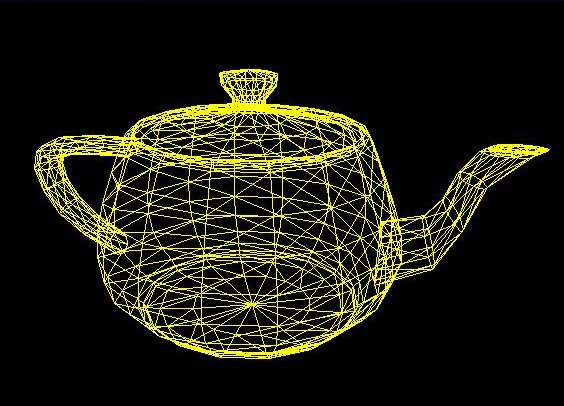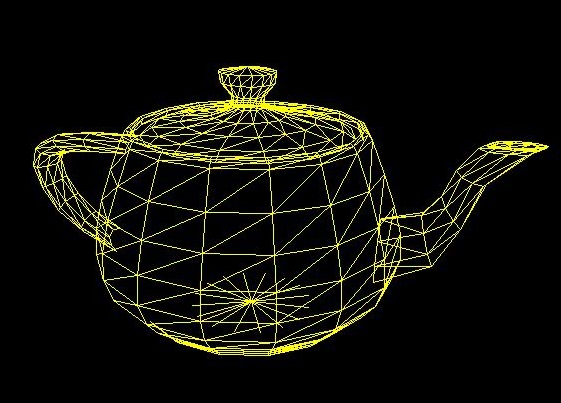Teaching:TUW - UE InfoVis WS 2007/08 - Gruppe 05 - Aufgabe 1 - Rendering: Difference between revisions
No edit summary |
No edit summary |
||
| Line 7: | Line 7: | ||
This is not a special rendering technique, but it's the basics for the rendering. The object is represented through different points which are connected. The surface of the object is described with lines. There are mainly two different ways to represent the object: | This is not a special rendering technique, but it's the basics for the rendering. The object is represented through different points which are connected. The surface of the object is described with lines. There are mainly two different ways to represent the object: | ||
# you can see all edges, even if you shouldn't see them, because they are in the background of the object an hidden by the front surface | # you can see all edges, even if you shouldn't see them, because they are in the background of the object an hidden by the front surface | ||
# you do some kind of | # you do some kind of visible-surface detection; therefore you need algorithms to decide which edges should be visible and which shouldn't be visible because they are hidden, so that you identify visible parts of a scene | ||
[[image:Wire frame.jpg|thumb|left|teapot represented by wire frames; no | [[image:Wire frame.jpg|thumb|left|teapot represented by wire frames; no visible-surface detection]] | ||
[[image:Wire_frame_backface_culling.jpg|thumb|left|teapot represented by wire frames with | [[image:Wire_frame_backface_culling.jpg|thumb|left|teapot represented by wire frames with visible-surface detection]] | ||
<br> | |||
===Scan Fill=== | |||
Revision as of 13:30, 3 November 2007
Rendering
Introduction
Rendering is a term which is used in computer graphics very often. It's the process of creating an image out of an abstract model of this image (e.g. polygon mesh). The shape in this abstract model is represented by many points. After the rendering process, the picture is not represented by different points anymore, but with a (realistic) surface. This process needs a lot of computing power, especially if you want to create a realistic environment and realistic objects with different light sources.
Techniques
There are several different techniques, how you can do the rendering. The following should give you a small overview of the most common techniques.
Wire Frame
This is not a special rendering technique, but it's the basics for the rendering. The object is represented through different points which are connected. The surface of the object is described with lines. There are mainly two different ways to represent the object:
- you can see all edges, even if you shouldn't see them, because they are in the background of the object an hidden by the front surface
- you do some kind of visible-surface detection; therefore you need algorithms to decide which edges should be visible and which shouldn't be visible because they are hidden, so that you identify visible parts of a scene

